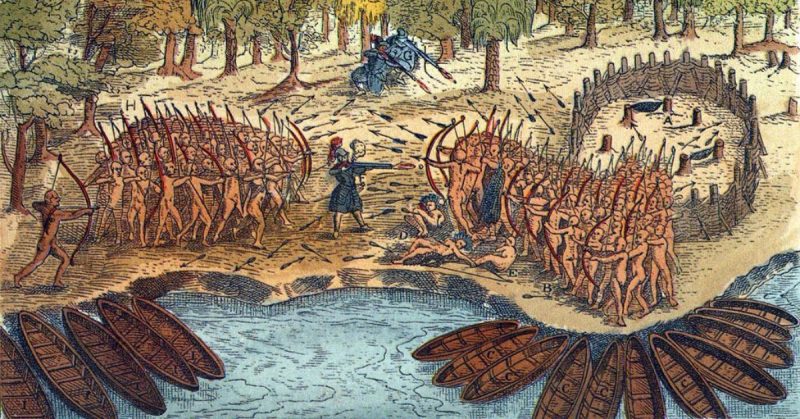On 1 September 1615, Samuel de Champlain, explorer and deputy viceroy of New France, left the Huron village of Cahiague in the company of five hundred warriors and twelve French musketeers. Their destination was the main village of the Onondaga people, which lay south of the eastern extremity of Lake Ontario. Their goal was to exterminate the Onondagas.
Champlain’s participation in the expedition represented a continuation of a carefully considered policy. His plans for the colonization of New France were critically dependent on the profitability of the North American fur trade, and the northern tribes (particularly the Huron, Algonquin, and Montagnais nations) were the primary source of furs for the French traders. Maintaining their goodwill was critical.
In Champlain’s view, one sure way to achieve this goal was to provide active support to them in their ongoing wars with the Five Nations of the Iroquois Confederacy (Cayuga, Mohawk, Oneida, Onondaga, and Seneca).
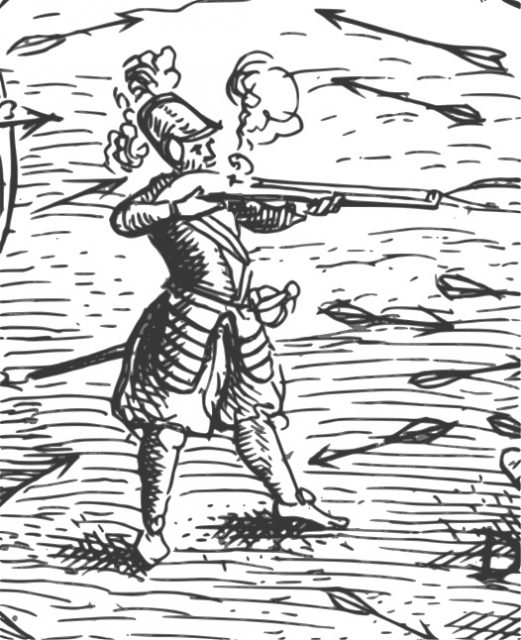
Twice before, in 1609 and 1610, Champlain and several of his men had fought beside warriors from the northern tribes against the Iroquois. In both instances, the devastating effect of gunfire from the Frenchmen’s muskets had terrorized the ferocious Iroquois and either put them to headlong flight or immobilized them, allowing Champlain’s Indian allies to reap a rich harvest of scalps and captives. To the Hurons, Champlain was “the giver of victories” – a force the Iroquois could not withstand.
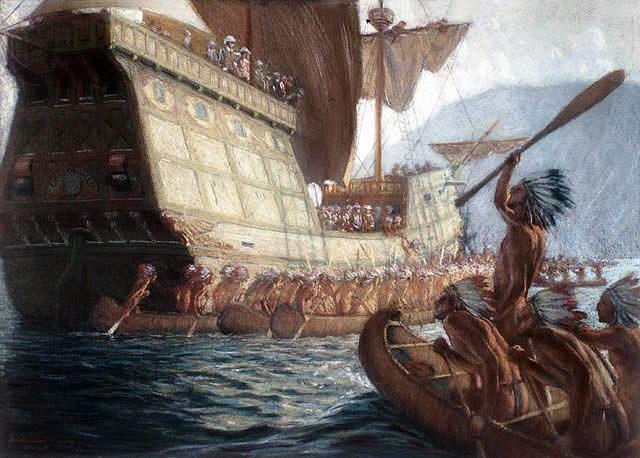
Outward Bound
When the Huron war party left Cahiague, the warriors were confident of an easy victory. Their route was deliberately circuitous to avoid Iroquois scouts and retain the critical advantage of surprise. Additionally, the Andastes, an allied tribe whose homeland lay to the southwest of the Onondaga stronghold, had promised to join the assault with five hundred warriors. Champlain sent one of his men, Etienne Brulé, ahead to their country to ensure they would meet with the Hurons on time.
Champlain’s army traveled southeast from Cahiague via Lake Simcoe, the Kawartha Lakes, and the Otonabee and Trent River systems to reach Lake Ontario. They crossed the lake at its eastern narrows (the area of modern-day Kingston), and by 10 October, the Onondaga village was in sight.
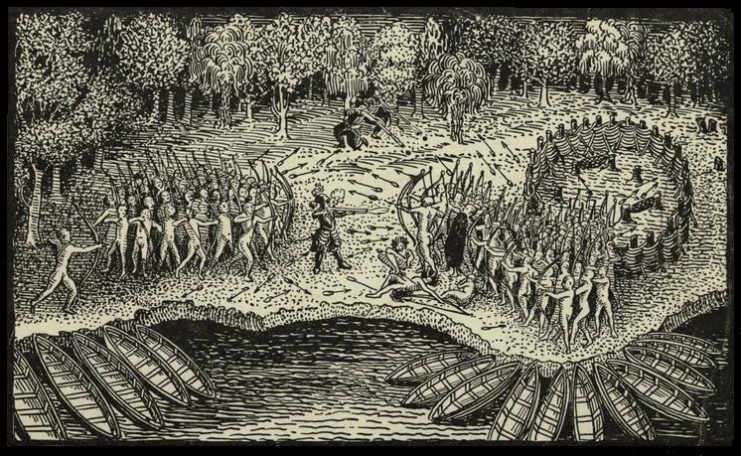
The Assault
At this turning point, the invaders’ plans began to unravel. The village’s defenses, consisting of four inward-sloping palisades that supported a gallery, were considerably stronger than the Hurons had anticipated. Their Andaste allies were nowhere to be seen, so the number of warriors available to storm the palisades was reduced by roughly half.
Finally, the element of surprise was squandered when the Hurons’ bloodlust drove them to attack a small group of Onondagas, including women and children, who were harvesting crops in a field filled with high, rustling cornstalks. A few of the intended victims escaped and raised the alarm in the village.
Champlain, a resourceful and experienced fighter, quickly revised the battle plan. He directed the Hurons to construct a wooden tower topped by a platform. From there, his musketeers could fire down on the Onondaga defenders who were stationed on the gallery atop the palisades. In addition, he ordered the building of mobile wooden shields behind which the Hurons could advance on the palisades protected from the arrows of their enemies.
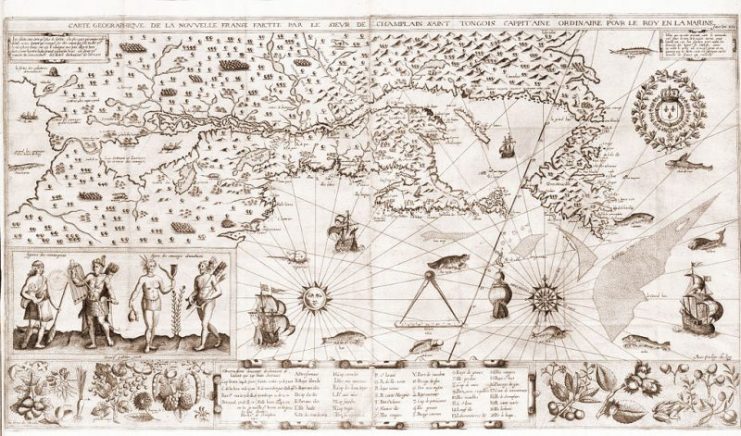
When these preparations were completed, the attack was launched. Once again, the Hurons’ lust for Iroquois blood overcame the required sense of discipline. Almost immediately, they abandoned their protective shields and dashed madly for the outer palisade. Many were cut down by Onondaga bowmen, who held their positions on the gallery despite the heavy toll taken on them by the Frenchmen’s musket fire from the tower.
The Onondagas had realized the guns could not kill them en masse, and they had shed their mindless fear of these weapons. Also, in this battle, the Onondagas were fighting for the survival of their village; they were ready to absorb casualties because there was nowhere to run.
The Onondaga arrows broke the Huron assault in short order. The northerners fled back to the cover of the forest, where they quickly concluded they were beaten. Champlain, who had taken an arrow in one leg, was unable to rally them. The Hurons’ sole objective was now to escape back to their homeland before the Onondagas could mount a pursuit.
In the retreat, Champlain was carried in a basket on the back of a powerful warrior and suffered intense pain throughout the journey – an ignominious ending to the last military expedition he would undertake.
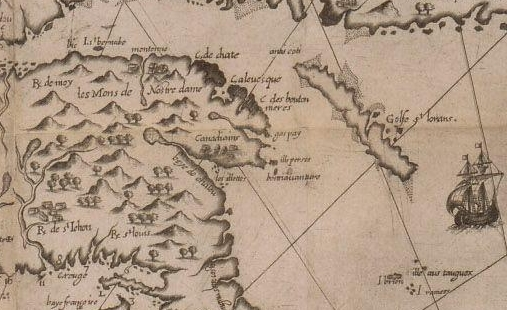
Aftermath
Once the Hurons were safely back in their country, they reneged on a promise to escort Champlain and his men to Quebec, claiming the woods bordering the route would be swarming with Iroquois seeking revenge. Champlain suspected his allies were actually frightened by the risk of retaliatory strikes against their villages and wanted to retain the Frenchmen and their muskets to bolster their defenses.
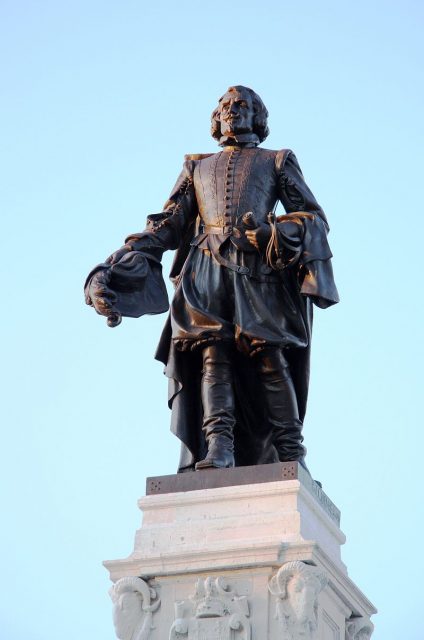
He was also aware that his prestige among the Hurons had been diminished by the failed attack on the Onondagas, even though their own murderous zeal was the principal cause of that debacle. So, to protect this important alliance, Champlain resigned himself to remaining among the Hurons at least for the winter.
Always inquisitive, he used this time to deepen his understanding of the natives’ ways and to learn more about the lands and waterways that they claimed lay further west.
The Iroquois did not attack, and the Hurons finally escorted their guests back to Quebec in April 1616.
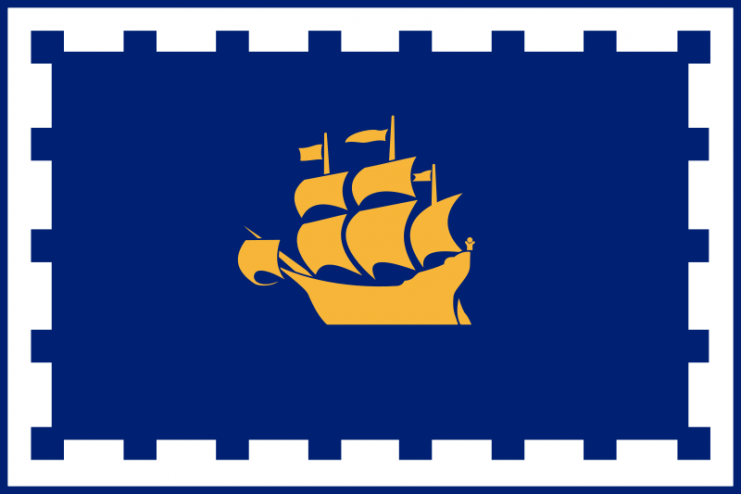
Read another story from us: Conservatism and Recklessness – Military Disasters Of Timid Generals
Etienne Brulé was not to blame for the non-appearance of the Andastes. When he arrived at the tribe’s main village on the Susquehanna River, he discovered they were much less eager than their Huron allies to attack the Onondagas.
While Brulé chaffed with impatience, the Andastes wasted several precious days on inconclusive powwows and council meetings. Finally, they were stirred into action and set off. They arrived at the rendezvous point two days after the Huron war party had retreated.
